|
| Recent Posts | - May, 2025-5,(1)
- April, 2025-4,(1)
- January, 2025-1,(1)
- July, 2024-7,(1)
- May, 2024-5,(2)
- May, 2023-5,(1)
- February, 2023-2,(1)
- November, 2022-11,(1)
- July, 2022-7,(2)
- March, 2022-3,(1)
- November, 2021-11,(2)
- August, 2021-8,(2)
- July, 2021-7,(2)
- June, 2021-6,(1)
- May, 2021-5,(1)
- March, 2021-3,(1)
- February, 2021-2,(2)
- January, 2021-1,(7)
- December, 2020-12,(3)
- March, 2020-3,(2)
- February, 2020-2,(1)
- December, 2019-12,(2)
- November, 2019-11,(1)
- October, 2019-10,(1)
- September, 2019-9,(1)
- August, 2019-8,(1)
- May, 2019-5,(1)
- April, 2019-4,(2)
- March, 2019-3,(2)
- December, 2018-12,(1)
- November, 2018-11,(4)
- July, 2018-7,(1)
- May, 2018-5,(3)
- April, 2018-4,(2)
- February, 2018-2,(3)
- January, 2018-1,(3)
- November, 2017-11,(2)
- August, 2017-8,(1)
- June, 2017-6,(3)
- May, 2017-5,(5)
- February, 2017-2,(1)
- December, 2016-12,(1)
- October, 2016-10,(2)
- September, 2016-9,(1)
- August, 2016-8,(1)
- July, 2016-7,(1)
- March, 2016-3,(2)
- February, 2016-2,(3)
- December, 2015-12,(5)
- November, 2015-11,(5)
- September, 2015-9,(1)
- August, 2015-8,(2)
- July, 2015-7,(1)
- March, 2015-3,(2)
- February, 2015-2,(1)
- December, 2014-12,(4)
- July, 2014-7,(2)
- June, 2014-6,(2)
- May, 2014-5,(3)
- April, 2014-4,(3)
- March, 2014-3,(1)
- December, 2013-12,(2)
- November, 2013-11,(1)
- July, 2013-7,(1)
- June, 2013-6,(2)
- May, 2013-5,(1)
- March, 2013-3,(3)
- February, 2013-2,(3)
- January, 2013-1,(1)
- December, 2012-12,(3)
- November, 2012-11,(1)
- October, 2012-10,(1)
- September, 2012-9,(1)
- August, 2012-8,(1)
- July, 2012-7,(6)
- June, 2012-6,(1)
- April, 2012-4,(1)
- March, 2012-3,(3)
- February, 2012-2,(3)
- January, 2012-1,(4)
- December, 2011-12,(3)
- October, 2011-10,(3)
- September, 2011-9,(1)
- August, 2011-8,(10)
- July, 2011-7,(2)
- June, 2011-6,(7)
- March, 2011-3,(2)
- February, 2011-2,(3)
- January, 2011-1,(1)
- September, 2010-9,(1)
- August, 2010-8,(2)
- June, 2010-6,(1)
- May, 2010-5,(1)
- April, 2010-4,(3)
- March, 2010-3,(2)
- February, 2010-2,(3)
- January, 2010-1,(1)
- December, 2009-12,(3)
- November, 2009-11,(3)
- October, 2009-10,(2)
- September, 2009-9,(5)
- August, 2009-8,(3)
- July, 2009-7,(9)
- June, 2009-6,(2)
- May, 2009-5,(2)
- April, 2009-4,(9)
- March, 2009-3,(6)
- February, 2009-2,(4)
- January, 2009-1,(10)
- December, 2008-12,(5)
- November, 2008-11,(5)
- October, 2008-10,(13)
- September, 2008-9,(10)
- August, 2008-8,(7)
- July, 2008-7,(8)
- June, 2008-6,(12)
- May, 2008-5,(14)
- April, 2008-4,(12)
- March, 2008-3,(17)
- February, 2008-2,(10)
- January, 2008-1,(16)
- December, 2007-12,(6)
- November, 2007-11,(4)
|
|
|
|
|
Trees 2021
|
1/21/2021 11:33:07 AM
|
|
|
Qty
|
Item #
|
Description
|
|
|
1
|
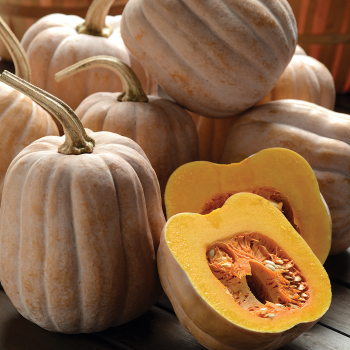
|
Autumn Frost Hybrid Squash - 20 seeds
Fruits store up to 4 months! Ribbed, rounded, 5 to 7 inch fruits average 4 pounds each and ripen to dark tan with a frosty overlay. Inside they have golden orange, high quality flesh that tastes like butternet squash, but richer. Medium length vines have intermediate resistance to powdery mildew allowing for exceptional yields of the 5 to 7 rounded fruits. Ideal for roasting in halves, or cut the top 2 inches off and bake it whole. It's perfect for stuffing! |
|
|
2
|
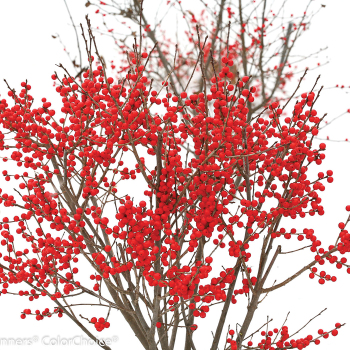
|
Berry Poppins Winterberry Holly
Feed the birds with these super colorful berries! Ideal for adding a bit of cheer to a blustery landscape. Much smaller than the native species, these compact versions grow only 3 to 4 feet tall. Easy care plants hardly ever require pruning. This heavy-fruiting female requires a pollinator, such as Mr. Poppins®. |
|
|
1
|
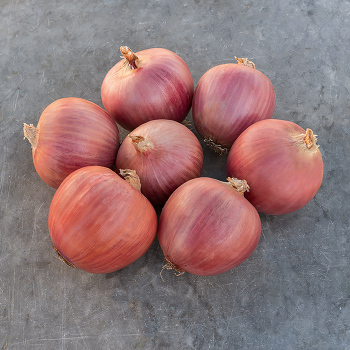
|
Blush Hybrid Onion - 50-75 plants
A pink onion that resulted from a cross between yellow and red varieties. The pretty bulbs average 3 to 4 inches in diameter with a quick drying, tight skin. Inside you'll find delicate, purple-pink rings that have a sweet, yet pungent taste. Stores well up to 6 months. A widely adaptable, long-day type perfect for norther locations. |
|
|
1
|
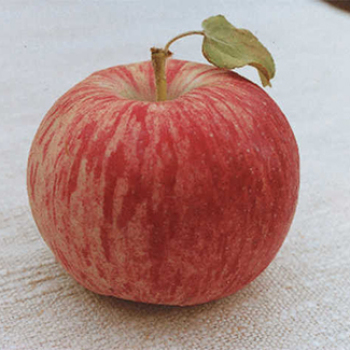
|
Duchess Of Oldenburg Standard Apple
Brought to this country over 150 years ago from Russia, Duchess is extremely hardy and has resistance to Apple Scab, Cedar-Apple Rust and Fire Blight. Fruit is medium size with skin color pale yellow with crimson stripes and splashes. Flavor is sprightly tart, superb for pies and sauce. Ripens mid-August to early September. |
|
|
1
|
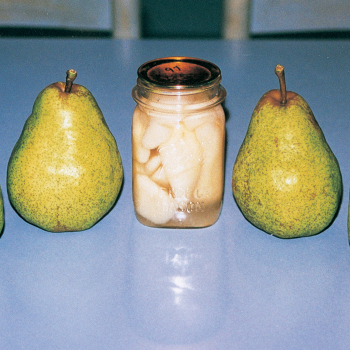
|
Karl's Favorite Dwarf Pear
Big fruits, some over one pound each! This excellent quality pear originated near Akron, Ohio in 1928. Yellow fruits have slightly russeted skin and are quite large. Flesh is fine-grained, melting and juicy, superb for fresh eating and canning. The hardy, vigorous trees are very productive, bear annually and have moderate resistance to fire blight. Fruit ripens in September. |
|
|
1
|
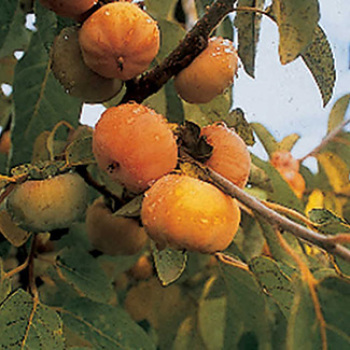
|
Meader American Persimmon
An American persimmon selected by Professor Elwyn Meader in New Hampshire. The delicious orange fruits are extremely sweet with a tomato-like texture when ripe. A frost enhances their flavor. Unripe fruits can be frozen or dried. Use them in puddings, cakes and cookies, as desserts or toppings, or dry them for a date-like flavor. Fruit ripens in late September. The tree is ornamental with lustrous, dark green leaves turning crimson in the fall. Grows up to 30 feet tall, but it can easily be kept smaller. A self-fertile variety, and if it is not pollinated by other persimmons the fruit is usually seedless. |
|
|
1
|
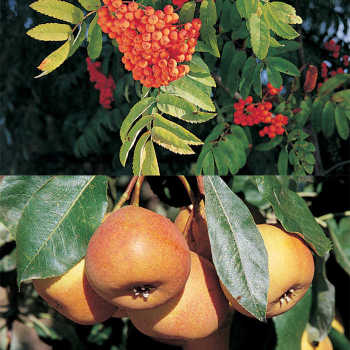
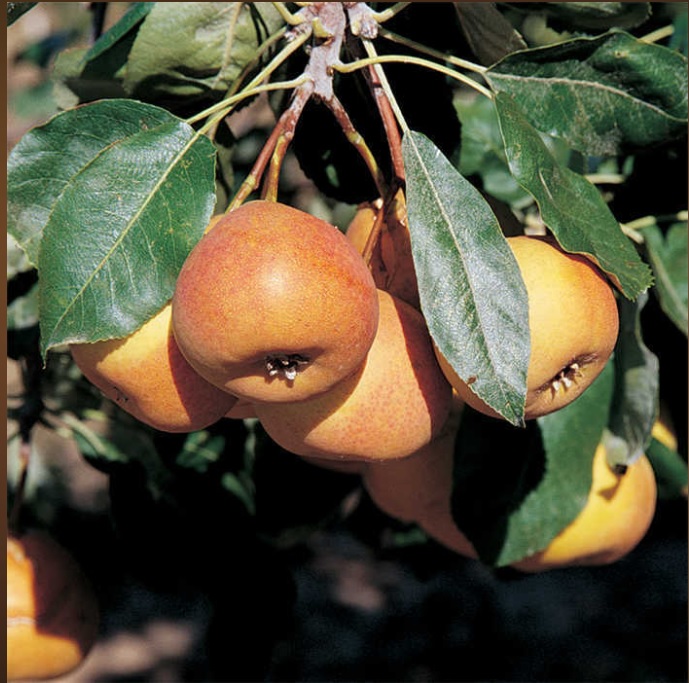
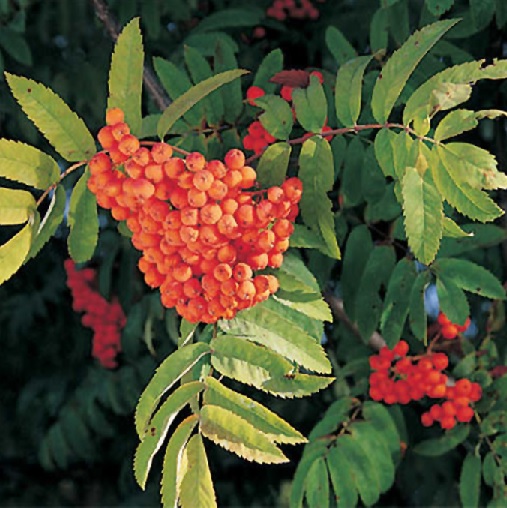
|
Mountain Ash Offer
Rabina
Shipova
Rabina
A unique true mountain ash found growing in the wild in Russia. Unlike other mountain ash, Rabina has remarkably good tasting fruit with a sweet-tart, non-bitter flavor. High in vitamins A and C, the abundant bright orange berries are good for fresh eating, juice, preserves, pastry and wine. The small ornamental trees grow up to 20 feet tall and have attractive pinnate foliage that turns orange-red in fall.
Shipova
Large delectable fruits! This unique hybrid of mountain ash and pear originated in Yugoslavia. Attractive trees produce round, yellow-orange fruits the size of large apricots. The mouth-watering, seedless fruits are aromatic with a slight rose-like scent. The 15 to 20 foot trees have attractive dark, silver-grey foliage and a nice pyramidal shape. Hardy and scab resistant. Partially self-fertile, but planting two Mountain Ash varieties will produce more fruit. 3 to 5 ft. bareroot trees |
|
|
1
|
|
Mr. Poppins Winterberry Holly
A male plant that does not set fruit, but can provide pollen for up to 5 plants of Berry Poppins. Plant within 50 feet of female plants.
|
|
|
1
|
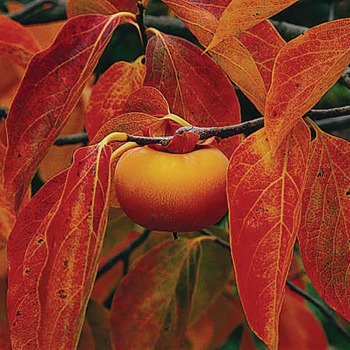
|
Nikitas Gift Hybrid Persimmon
A special self-fertile persimmon from the Ukraine. Introduced by the Nikita Botanic Garden in Ualta, Ukraine, this unique cross of Asian and American persimmons bear abundant crops of 2 1/2 inch diameter, reddish- orange, delectable sweet fruits that ripen mid to late October and stay on the tree until frost. Fruits must be allowed to soften before eating. The naturally dwarf tree has beautiful orange-yellow fall color. |
|
|
2
|
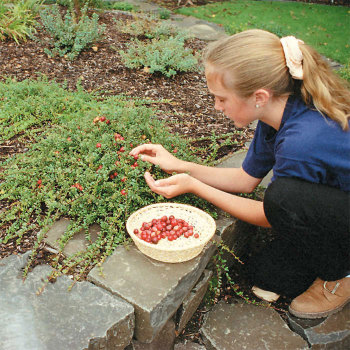
|
Pilgrim Cranberry
You don't need a bog to grow American cranberries. A sunny, well-drained bed with acidic soil and good moisture content will do. These versatile, nutritious fruits are lovely ornamental, fruiting ground covers. Only 6 inches tall, they have dainty evergreen foliage and small pink flowers in spring followed by abundant crops of large, tasty red berries that ripen in fall. Pilgrim is self-fertile and hardy to -30 degrees F. Plants begin bearing 1 to 2 years after planting. |
|
|
2
|
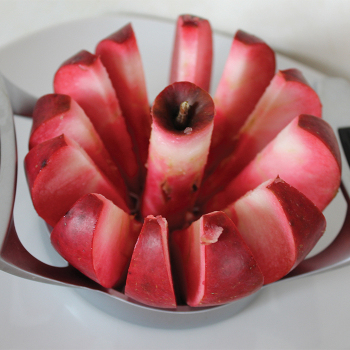
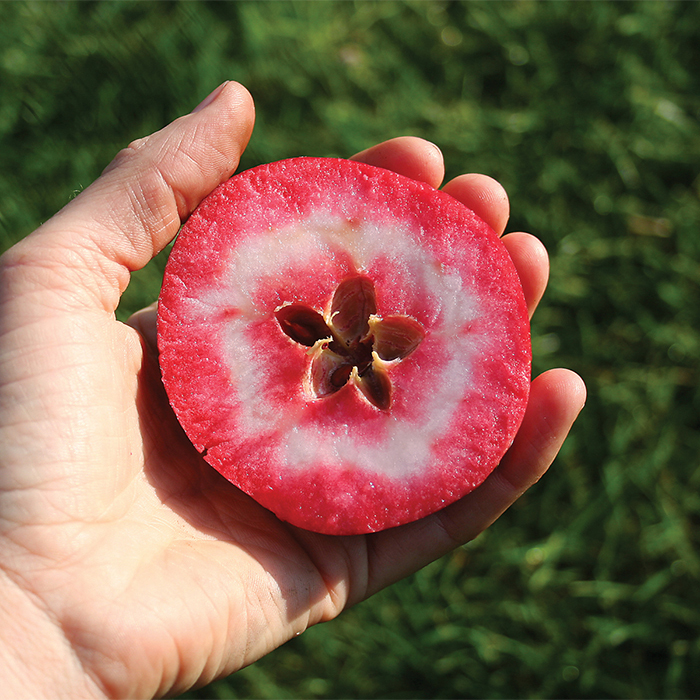
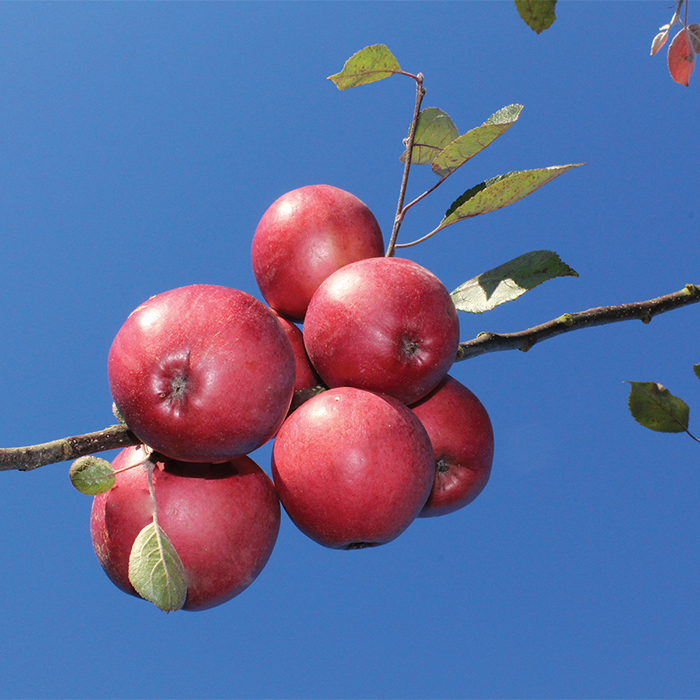
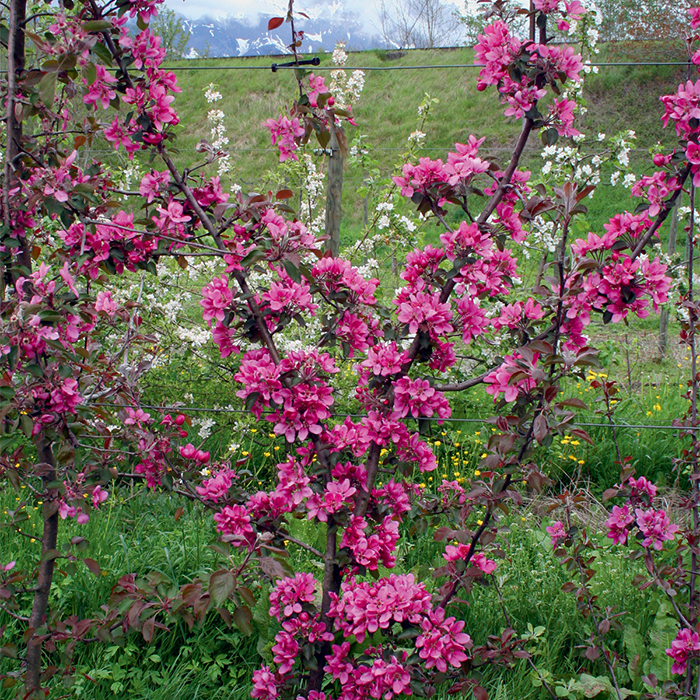
|
Redlove Odysso Red Fleshed Apple
Unique dark pink to red fleshed fruit with a phenomenal taste. The bright redd fruits resemble a normal apple from the outside, but that's where the similarities stop. The firm, red flesh is crisp and refreshingly sweet, with a hint of berries that fully develops after 3 to 4 weeks in storage. Vigorous trees grow 6 to 10 feet tall and bear delightful pink flowers in spring, Fruits are ready to harvest in early October and store well for several months. Resistant to scab. Not self-fertile, so plant with another apple or crab apple. |
|
|
1
|
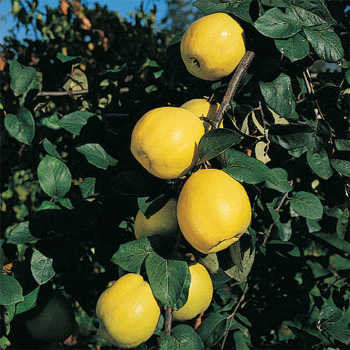
|
Russian Quince
Our Russian quince are unique for their tender and mild flavored fruit which can be eaten right from the tree. The ornamental trees display beautiful, cup-shaped, white flowers in late spring followed by large, waxy yellow, highly fragrant, round to pear-shaped fruits in early fall. Flavor is described as lemony or pineapple. Pick in October and allow to soften. High in Vitamin C and pectin, they are used for jams, jellies, baked goods, flavoring and for canning. Small, well-behaved, disease-resistant trees grow 10 to 15 feet tall. Budded on quince rootstock. |
|
|
Blog Home
|
|